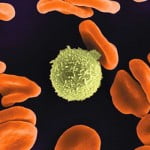
Researchers use live kidney cells that will grow on and around the microchip filters. (Representational Image)
“We are creating a bio-hybrid device that can mimic a kidney to remove enough waste products, salt and water to keep a patient off dialysis,” said William H Fissell IV, from Vanderbilt University Medical Centre in US.
The goal is to make it small enough, roughly the size of a soda can, to be implanted inside the body, Mr Fissell said. The key to the device is a microchip, researchers said. “It uses the same processes that were developed by the microelectronics industry for computers,” said Mr Fissell.
The chips are affordable, precise and make ideal filters. Researchers are designing each pore in the filter one by one based on what they want that pore to do. Each device will hold roughly fifteen microchips layered on top of each other. However, the microchips have another essential role beyond filtering, researchers said.
“They’re also the scaffold in which living kidney cells will rest,” said Mr Fissell.
Researchers use live kidney cells that will grow on and around the microchip filters. The goal is for these cells to mimic the natural actions of the kidney.
“We can use kidney cells that fortunately for us grow well in the lab dish, and grow them into a bioreactor of living cells that will be the only ‘Santa Claus’ membrane in the world – the only membrane that will know which chemicals have been naughty and which have been nice,” said Mr Fissell.
“Then they can reabsorb the nutrients your body needs and discard the wastes your body desperately wants to get rid of,” said Mr Fissell.
Since this bio-hybrid device sits out of reach from the body’s immune response, it is protected from rejection. “The issue is not one of immune compliance, of matching, like it is with an organ transplant,” said Mr Fissell.
The device operates naturally with a patient’s blood flow.
“We must transform that unsteady pulsating blood flow in the arteries and move it through an artificial device without clotting or damage,” he said.
Researchers are using fluid dynamics to see if there are certain regions in the device that might cause clotting. They use computer models to refine the shape of the channels for the smoothest blood flow.
Then they rapidly prototype the new design using 3D printing and test it to make the blood flow as smoothly as possible.





